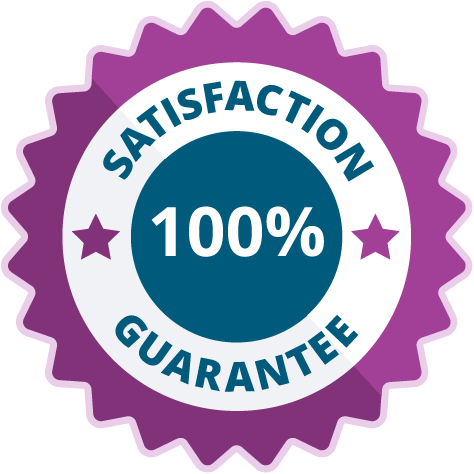PMP Domain #2: Process [updated 2021]
The Project Management Professional (PMP) certification was updated to a new format on January 2, 2021. This new version of the exam has replaced the 49 processes with 35 tasks. PMP domain 2: process covers 50% of the PMP exam and is made up of 17 tasks used to test your ability to perform the project management process.
Project management “process” involves beginning a project and all the tasks you need to focus on to take that project to delivery efficiently. The processes involved in managing a project through the various stages from inception to successful deployment/handover involve several key tasks.
The 17 tasks in the PMP certification exam evaluate a project manager’s capabilities in terms of project execution, communication with stakeholders, managing budget, allocating work packages, prioritizing requirements, managing scope and more. The PMP domain 2 exam takes a project manager (PM) through each of these tasks. This section of the PMP certification is an 8intensive section and a successful candidate will be able to demonstrate their expertise across many areas of project management.
The 17 tasks within the PMP process domain, each task has several “enablers” to help focus on key areas within each task:

Earn your PMP, guaranteed!
Enroll in a PMP Boot Camp and earn one of the industry’s most respected certifications and enjoy exam insurance.
Task 1: Execute project with the urgency required to deliver business value
Assess opportunities in delivering value. Business value throughout the project is a requisite of this task. The student must be able to subdivide project tasks when required to find the minimum viable product (MVP).
Task 2: Manage communications
Understand the communication needs of all stakeholders and how to communicate project information effectively. They must then determine the best modes of communication and how often to disseminate information between stakeholders. An effective PM should also understand the level of detail required on a per stakeholder basis.
Task 3: Assess and manage risks
What are the appropriate risk management options to use and how to assess and prioritize these risks.
Task 4: Engage stakeholders
Understand who the key stakeholders are, and their influence and impact on a project. Develop, execute and validate a strategy for stakeholder engagement.
Task 5: Plan and manage budget and resources
Plan and estimate a budget needed for a project. Use lessons learned from past projects to anticipate future budget challenges. Monitor budget variations and work with the governance process to adjust as necessary. Plan and manage resources
Task 6: Plan and manage schedule
How long will project tasks last? Assign people to tasks and create timelines. Measure ongoing progress, reschedule and adjust based on project management methodology.
Task 7: Plan and manage the quality of products/deliverables
Set the quality standard for project deliverables and recommend options for improvement based on quality gaps
Task 8: Plan and manage scope
Prioritize requirements and break down the scope. Monitor and validate this scope.
Task 9: Integrate project planning activities
Analyze data based on consolidated project/phase plans. Work out dependencies, gaps, and continued business value. Use data to make informed project decisions.
Task 10: Manage project changes
Anticipate change control requirements and how to handle change. Execute change management strategy according to the methodology.
Task 11: Plan and manage procurement
Define resource requirements and needs. Manage suppliers/contracts and plan and manage procurement strategy.
Task 12: Manage project artifacts
Determine the requirements for managing the project artifacts. Implement a version control system for project data that is accessible to all stakeholders. Continually assess the effectiveness of the management of the project artifacts.
Task 13: Determine appropriate project methodology/methods and practices
Assess project needs, complexity and magnitude. Recommend project execution strategy and recommend a project methodology/approach (predictive, agile or hybrid, for example).
Task 14: Establish a project governance structure
Determine appropriate governance for a project and define escalation paths and thresholds.
Task 15: Manage project issues
Recognize when a risk becomes an issue. Attack the issue with the optimal action to achieve project success. Collaborate with relevant stakeholders on the approach to resolve the issues.
Task 16: Ensure knowledge transfer for project continuity
Discuss project responsibilities within the team and outline expectations for the working environment.
Task 17: Plan and manage project/phase closure or transitions
Determine the criteria to successfully close the project or phase. Validate readiness for transition between phases and conclude activities to close out the project or phase.
What to focus on with the project management certification
The exam for PMP certification is focused on the tasks outlined above. However, the Project Management Institute (PMI) offers “A Guide to the Project Management Body of Knowledge” (PMBOK Guide). This is a body of knowledge collated by the industry as a fundamental resource for project managers to refer to. As such, it is an evolving handbook that reflects best practices at any given time. This is an essential guide to the practice of project management and offers anyone sitting the exam an insight into the standards expected of the profession. Some general areas to focus on for domain 2 of the exam are:
- What are the most appropriate project methods and best practices (including communication channels)
- How to plan and manage the scope of the project
- Available budget and resources
- Manage the schedule and assign work packages
- Develop project planning activities
- Manage the product and deliverables
- Determine a change control process
- Develop a project governance process
Specific knowledge and skills in the project management process
Risk management: Understand how to evaluate the risks of a project across its lifecycle. Know how to manage those risks and make decisions based on the risk level, as aligned to the project and business goals.
Communication: How to manage communications across disparate roles, teams and potentially consortium companies. Know how to run effective discussions using various methodologies including agile, hybrid or predictive.
Project artifacts: Create, store and analyze project artifacts. These artifacts are documents that are related to the project. The artifacts should align a project to the organization’s business objectives. Artifacts include items such as a project charter and a requirements list.
Change control: Understand the best practices for effectively managing change control. This can be a vital aspect of project management and delivery, that if not carried out well, can have cost implications and cause delivery delays.
Management and governance: Managing a project can be complicated, especially if there are multiple stakeholders. Being able to effectively govern a project and ensure all entities are informed and involved is a vital project management skill. A PM has a high-level understanding of the organization as well as the technology/products of the company and uses this knowledge to make decisions that maximize the business value of the project.
Estimation tools and techniques: A PM must be able to plan, cost and schedule work packages effectively. This includes the use of various project estimation tools such as analogous, parametric, three-point and bottom-up estimating.

Earn your PMP, guaranteed!
Enroll in a PMP Boot Camp and earn one of the industry’s most respected certifications and enjoy exam insurance.
PMP domain 2 is important
We hope this offers any interested parties an insight into what taking the PMP certification domain 2: process entails. The next article in the series will look at domain 3, business environment.
Sources
PMBOK, PMI
Estimating as an art--what it takes to make good art, PMI
PMP Handbook, PMI







